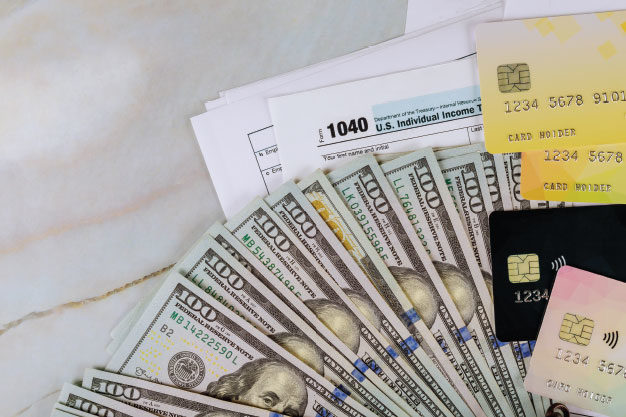IRS Urges Taxpayers to Choose Tax Preparers Carefully to Protect Data (IR-2025-21)
The IRS reminded taxpayers to choose the right tax professional to help them avoid tax-related identity theft and financial harm. […]
Read MoreThe IRS has released final regulations implementing the clean hydrogen production credit under Code Sec. 45V, as well as the election to treat a clean hydrogen production facility as energy property for purposes of the energy investment credit under Code Sec. 48. The regulations generally apply to tax years beginning after December 26, 2023.
The regulations adopt the proposed regulations (REG-117631-23) with certain modifications. Rules are provided for determining lifecycle greenhouse gas (GHG) emissions rates resulting from hydrogen production processes; petitioning for provisional emissions rates; verifying production and sale or use of clean hydrogen; modifying or retrofitting existing qualified clean hydrogen production facilities; and using electricity from certain renewable or zero-emissions sources to produce qualified clean hydrogen.
The Inflation Reduction Act of 2022 (P.L. 117-169) added Code Sec. 45V to provide a tax credit to produce qualified clean hydrogen produced after 2022 at a qualified clean hydrogen production facility during the 10-year period beginning on the date the facility is originally placed in service.
The credit is calculated by multiplying an applicable amount by the kilograms of qualified clean hydrogen produced. The applicable amount ranges from $0.12 to $0.60 per kilogram depending on the level of lifecycle greenhouse gas emissions associated with the production of the hydrogen. The credit is multiplied by five if the qualified clean hydrogen production facility meets certain prevailing wage and apprenticeship requirements.
The regulations provide that a qualified clean hydrogen production facility is a single production line that is used to produce qualified clean hydrogen. This includes all components, including multipurpose components, of property that function interdependently to produce qualified clean hydrogen through a process that results in the lifecycle GHG emissions rate used to determine the credit. It does not include equipment used to condition or transport hydrogen beyond the point of production, or feedstock-related equipment.
The lifecycle GHG emissions rate is determined under the latest publicly available 45VH2-GREET Model developed by the Argonne National Laboratory on the first day of the tax year during which the qualified clean hydrogen was produced. If a version of 45VH2-GREET becomes publicly available after the first day of the taxa year of production (but still within such tax year), then the taxpayer may elect to use the subsequent model.
Code Sec. 45V requires the clean hydrogen to be produced for sale or use. No hydrogen is qualified clean hydrogen unless its production, sale, or use is verified by an unrelated party. A verification report prepared by a qualified verifier must be attached to a taxpayer’s Form 7210 for each qualified clean hydrogen production facility and for each tax year the Code Sec. 45V credit is claimed. The regulations outline the requirements for a verification report. They also contain requirements for the third-party verifier to perform to attest that the qualified clean hydrogen has been sold or used by a person for verifiable use.
A facility placed in service before 2023 that is modified to produce qualified clean hydrogen may be eligible for the credit so long as the taxpayer’s expenses to modify the facility as chargeable to the capital account. However, merely changing fuel inputs does not constitute a modification for this purpose. A modification must enable to the facility to produce qualified clean hydrogen if it not before the modification to meet the lifecycle GHG emissions rate. Alternatively, an existing facility may be retrofitted to qualify for the credit provided that the fair market value of used property in the facility is not more than 20 percent of the facility’s total value (80/20 Rule).
A taxpayer that owns and places in service a specified clean hydrogen production facility can make an irrevocable election to treat any qualified property that is part of the facility as energy property for purposes of the energy investment credit under Code Sec. 48. The final regulations contain definition of a specified facility, the energy percentage for the investment credit, and the time and manner for making the election. The rules include a safe harbor for determining the beginning of construction and using a provisional emissions rate (PER) to calculate the investment credit.
The IRS reminded taxpayers to choose the right tax professional to help them avoid tax-related identity theft and financial harm. […]
Read More
The IRS provided six tips to help taxpayers file their 2024 tax returns more easily. Taxpayers should follow these steps […]
Read More
The IRS encouraged taxpayers to make essential preparations and be aware of significant changes that may affect their 2024 tax […]
Read More
Guidance is provided for property and casualty insurers that write inland marine insurance and pay the State Fire Marshal Regulatory […]
Read More
The IRS released the optional standard mileage rates for 2025. Most taxpayers may use these rates to compute deductible costs […]
Read More
The IRS, in partnership with the Coalition Against Scam and Scheme Threats (CASST), has unveiled new initiatives for the 2025 […]
Read More
The IRS reminded disaster-area taxpayers that they have until February 3, 2025, to file their 2023 returns, in the entire […]
Read More
The IRS has announced plans to issue automatic payments to eligible individuals who failed to claim the Recovery Rebate Credit on their […]
Read More